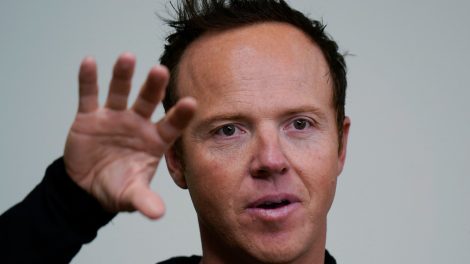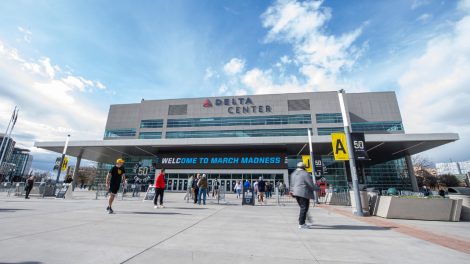Welcome to yet another edition of the #AskEE mailbag. Thanks for submitting such excellent questions.
Let’s dive right in.
Hey Sean! I’m going to answer your second question first because the Canadiens depleted themselves in trading Nate Thompson, Nick Cousins, Ilya Kovalchuk and Marco Scandella prior to this season’s trade deadline and that means there likely isn’t much variance in the lineup I’d choose versus the one the coaches will settle for.
However, these are the lines and pairings I think they’d likely go with, along with an explanation of why I think they’ll go with them. I’ll also let you know where I’d differ.
Line 1: Tomas Tatar-Phillip Danault-Brendan Gallagher
This one’s a no-brainer. One of the best 5-on-5 and two-way lines in the NHL. The chemistry has been built over two seasons and there’s no reason to disrupt it. Especially since they can potentially come out on the winning side of a matchup with either of Sidney Crosby’s or Evgeni Malkin’s lines — even if we know those Penguins stalwarts have the decisive edge.
Line 2: Jonathan Drouin-Nick Suzuki-Joel Armia
Even if Nick Suzuki is a rookie, he’s Montreal’s second-most versatile centre. And it’s clear Canadiens coach Claude Julien views him that way, hence his elevated ice-time from early on in the season straight through March.
Give Suzuki Drouin’s speed and skill on the left, and Armia’s puck protection ability and shot on the right, and you have the makings of a strong line. If Drouin — who’s finally healthy again thanks to three months of rest — looks like the guy we saw at the beginning of the season, it will make a considerable difference in Montreal’s ability to match the Penguins. And if Armia looks like the guy we saw all season, that will also help.
[relatedlinks]
Line 3: Paul Byron-Max Domi-Artturi Lehkonen
I think there’s a chemistry factor in the assembly of this line, too. Lehkonen and Domi played over 400 minutes at 5-on-5 together this past season, and they complement each other well. Add in Byron’s speed and tenacity and you’ve got a line that can be effective on both sides.
It’s right here, in the middle six, where you could have the most variance between what I would do and what Julien likely will. I’ve assembled Lines 2 and 3 the way I think he would, but I’d consider playing Drouin with Domi and Byron, and having Lehkonen play with Suzuki and Armia.
Any way you slice it, you have two lines that are almost interchangeable — both in their usage, but also in being able to mix and match pieces based on whether you need more defence or more offence. I think ice-time, at least at 5-on-5, should be generally around the same for all six players.
Line 4: Jordan Weal-Jake Evans-Dale Weise
OK, this is where it gets complicated. I would say that this is the line Julien starts off with on paper, but competition in camp is going to determine how it’s eventually assembled for the play-in.
At first glance, it might seem curious to some to see Weal lined up on the left, but Weal told me he has played a great deal of his professional career at that position, and that it’s his position of preference — even if we haven’t seen him there for Montreal.
Also, even if Weal has been an alternate in Julien’s lineup this season, I think he has to play for two reasons: 1) he’s a second faceoff man on a line centred by a rookie in Evans, and 2) he can execute that task and be an effective player around the net on the power play.
Why does Evans win out over Ryan Poehling? He doesn’t necessarily. Those two are going to have a serious competition in camp for the job, but Evans starts with the edge because he finished in that position when the season was paused.
Now, if Jesperi Kotkaniemi proves to be sufficiently healed from his spleen injury, and if he looks much more like the player who collected 13 points in 12 AHL games before getting injured — and less like the player who struggled through his entire sophomore campaign in the NHL — that could upset the entire apple cart. For now, we’ll just assume he won’t be because, to date, we still don’t have an update indicating he’s been medically cleared to play.
Dale Weise on the right? Maybe Julien sees Poehling as a faceoff option and a better left winger than Weal and that puts Weal and Weise in competition with each other. But, assuming he sees it like I do (which is a big assumption), Weise has pedigree as a playoff performer and he played steadily and solidly over the final few weeks of the season.
These lines leave Charles Hudon on the bubble, but he could see some time if he forces the issue.
[snippet id=3816507]
On defence (and this is going to cover a question asked by @Daniel_Hachey about whether or not to pair Ben Chiarot and Shea Weber together):
D1: Ben Chiarot-Shea Weber
I think Julien is going this way, and the minutes for these two are going to be huge. On the one hand, you have to wonder if they’ll: a) come out of the gate on top of their respective games (Chiarot has told me he’s always been a slow starter, and big men — and Weber’s certainly a big man — tend to take a couple of weeks before their motors are running at full steam), and b) if they have the speed to handle what will be coming at them from Pittsburgh’s top two lines.
But, assuming playoff rules (there are no rules) come into effect, the size and nastiness combination of Chiarot and Weber is one Julien is likely to lean on.
D2: Brett Kulak-Jeff Petry
This pairing’s assembly and success is contingent on Kulak bringing an assertive game to camp and carrying the type of confidence that initially made him an under-the-radar acquisition for the Canadiens prior to the 2018-19 season. We saw glimpses of that Kulak this season, but not often enough.
D3: Victor Mete-Noah Juulsen
I know what you’re thinking: is Juulsen going from playing one AHL game in March, after months of inactivity due to migraines and vision issues, straight onto Montreal’s third pairing?
It’s a tall ask, but if Juulsen’s up for it, he could prove to be the perfect defensive complement to Mete’s speedy style. I don’t know that he starts (on paper) over Christian Folin, Xavier Ouellet or Cale Fleury, but surely he sees the opportunity as the ripest one he’s going to get to resume his NHL career in short order. And he’s a better option than at least two of those players, regardless.
Let’s face it, both of Juulsen and Mete are going to have to earn their way onto this unit. But if they manage to do it by playing to the height of their abilities in camp, they make Montreal a better team as a pair.
Hi Josh. Ultimately, nothing is permanent. But if nothing changes, and if everyone remains healthy, wing might be the best place for Poehling.
If that proves to be the case, it’ll be pertinent for Poehling to continue to get stronger, and to incorporate a bit more bite into his game. He processes the game very well, his positioning enabled him to make the unlikely transition to wing — at first it looked like it had no chance of working, but Poehling did quite well at the wing in his second go of it with Montreal later in the season — and now he has to take advantage of his size in order to create more space for himself and his linemates.
I don’t believe Poehling can produce on the same level as Josh Anderson at his peak, nor do I think he’s got the physicality of Boone Jenner. But he has more offensive potential than most people are willing to give him credit for and, as he gets more comfortable with the NHL game, he can become harder to play against.
Time will tell what the right role for Poehling is. The good thing is, the Canadiens and Poehling have time, as he’s only 21 years old.
If I were running the Canadiens and had a chance to trade for Josh Anderson, I’d be more than compelled by that opportunity.
Anderson is six-foot-three, 222 pounds, and he plays like a man that size and with the speed of someone considerably smaller. He also produced 63 goals in 223 games from 2016-2019.
Here’s the rub: why did Anderson have just one goal this season despite only suffering the shoulder injury that ended his campaign prematurely mid-stream on Dec. 14?
Is something else wrong there? I know that’s the question most hockey execs were asking in the lead-up to the deadline — especially since it was only announced Anderson was having season-ending surgery on March 2.
Meanwhile, the 26-year-old is on an expiring one-year deal that pays him $1.85 million. He’s an RFA for one more year.
I can’t speculate on what it will cost to acquire Anderson. I think it’s only logical some would suggest trading Max Domi for him straight up makes sense, but that’s a considerable gamble on Montreal’s behalf. And here’s what makes it an even bigger one, outside of just the health issue: if you make a move like that, you’re telling Anderson he’s your guy, and that essentially locks you into signing him to a long-term deal immediately.
Now, if the Canadiens are comfortable with Anderson’s injury situation, and if they feel he can continue on as a 25-plus goal scorer who brings an edge that few players on their team have, then they’ll have to pony up.
But it’s a big move to give up some good assets (whether it’s Domi or some futures), to sign Anderson to a long-term deal coming off an injury-plagued and woefully unproductive season, and to tie up dollars in this player when Domi, Tatar, Gallagher, Danault and Petry all need new deals at the end of next season.
Hi Joshua. I think the overall plan has to be to reduce Weber’s minutes to a more manageable 22-23 per game versus 27-plus on most nights.
I think it’s been the plan for a long time, but two things always seem to get in the way. It goes without saying that the depth of Montreal’s blue line is one of those things, and the other is a coach who looks down his bench and sees Big No. 6 standing up and ready to jump right back on the ice.
It sure is compelling to keep throwing Weber over the boards when he’s consistently up for the challenge.
But Weber is going to be 35 in August, and if you’re hoping he at least makes it through his remaining six years under contract playing reasonably effective hockey, you better start making some aggressive moves to better insulate him.
Hi John. Without any inside knowledge of the situation, I’m fairly confident Domi will be permitted to play.
But if he wasn’t allowed, naturally Suzuki would be given that much more to bite off.
That said, whether Domi plays or not, I believe Suzuki is still going to be in one of those premium matchups.
Sammy, If Kotkaniemi is healthy and ready to go, I’m giving him an opportunity to earn his way into a role.
You certainly can’t just give it to him, but the last thing you want to do is make the player you chose third overall in 2018 feel as though you don’t even think he should be given an opportunity to compete for a role.
I think some perspective is in order when it comes to Kotkaniemi; he had 34 points as the youngest player in the NHL two seasons ago and he managed that in a limited role. So, even if he struggled mightily from October to February this season — and he did — some time away to reflect on that, and to get healed up and stronger, likely did him some good. And given his upside, which is still reasonably high, there’s no telling when he could bust out of his shell.
It could happen this August.
I think the way the organization views Drouin is quite pragmatic and very much through the same lens they view all their players.
They want to see a player who averages between 50-60 points for the $5.5-million salary they’re giving him. It’s always about value.
If he produces less, his value is harder to justify. If he produces more, that’s a bonus.
Looking back, Drouin produced 46 points in his first season with Montreal. And though that was underwhelming to a degree, the Canadiens felt it was reasonable given that they put him in a situation — forcing him to play centre when he had no experience at the position in the NHL — that wasn’t conducive to him being as productive as he should’ve been right off the hop.
If you look at the 2018-19 season, the Canadiens were likely merely satisfied with Drouin’s 53-point output, but they’d have been much more content if he closed out the season the way he started it. They’d have loved to have said, “Look at what he did this year,” had he produced more than six points over his final 26 games.
This past season, beyond the points, we saw something in Drouin — at least before he suffered his wrist injury — that hadn’t quite been there since he was traded to Montreal from Tampa for Mikhail Sergachev in 2017. His commitment to playing on the inside was truly apparent and he was en route to posting career highs in every relevant offensive category.
Drouin was (understandably) a shell of that player upon his return, with his wrist still causing him obvious discomfort and an ankle sprain largely affecting his skating. But if he’s back to being the guy we saw at the start of the season come August, the Canadiens’ opinion of him will become more favourable.
My opinion: Drouin is 25 years old and 349 games into his NHL career and I believe he’s prepared to be the player we saw at the beginning of the season. If he proves me right, that puts him in the star category.
But the idea of him developing into a consistent superstar, at this stage, is a stretch.
Hey Anders. I think there are multiple factors that place Domi and the Canadiens on a path towards a short-term deal.
From Montreal’s end, Domi’s dip in production from 28 goals and 72 points in 2018-19 to 17 goals and 44 points this season tips the scales in their favour in arbitration. Perhaps they’d use that as leverage to convince Domi to put pen to paper on a three- or four-year deal that gives him a better number than what he’d receive on a one-year deal — especially since they’d be buying up a couple of UFA years.
But I think they’d be more inclined to sign him for one season and then re-assess next summer.
And, as outlined above, the Canadiens have a lot of work to do to fit everyone in under the cap come summer of 2021, and they have to be fully sure of where Domi fits on their roster before committing to him.
On Domi’s end, he’d be wise to bet on himself for at least one more season and then swing for the fences on long-term contract demands. Regardless of what happens with the cap, the market will always pay for premium players, and he can prove he’s exactly that.
Hey Andrew. There’s so much that needs to get figured out before I can even start inquiring with sources on whom the Canadiens might target via trade.
All I can say is, Marc Bergevin always says you make your team in June and July, and I would expect Bergevin has some big plans for the off-season — even if it won’t be in June and July.
As for your second (and more important) question: I can grow a beard like Elliotte has, but I respect myself too much to do it.
Hey Nick. Over the last few weeks? My ballpark would be 100 per cent of Canadiens players and NHL players in general have had access to ice over the last few weeks.
In truth, I’ve spoken to a few players who have been secretly skating since March. And no, I won’t be naming names…
This is a perfectly reasonably question that I don’t have an answer for. Perhaps an even bigger question is: why are most teams so stuck in these archaic-type structures? It’s way past time to create more positions — particularly on the skills development front.
Specific to the Canadiens, they have two excellent people charged with communicating, visiting and working with their prospects in Francis Bouillon and Rob Ramage. They have Martin Lapointe overseeing that work. And all three men are well-reputed, and they’ve always been praised by the prospects working with them.
But just look down the 401 and the Toronto Maple Leafs have Darryl Belfry as a player development consultant. They have Adam Nicholas and Nik Antropov in skills development roles. They list Barb Underhill as a skating development consultant. That’s on top of having Scott Pellerin, Hayley Wickenheiser and Stephane Robidas in the traditional roles, and I don’t think any of their prospects are complaining about being over-managed.
Hey Marc. I’m not expecting there to be compliance buyouts. I don’t believe the cap will be dropping and, based on what sources are telling me, the owners aren’t particularly interested in having them.
We know the players certainly don’t like them.
I’ll say Ylonen has a crack.










